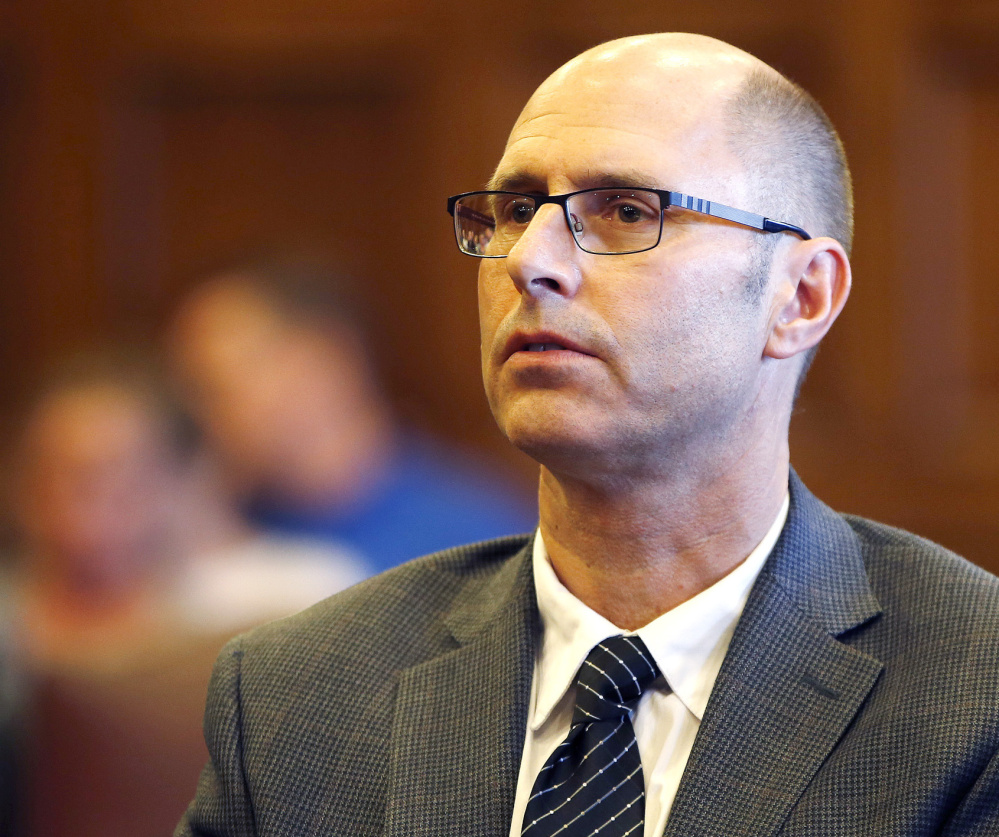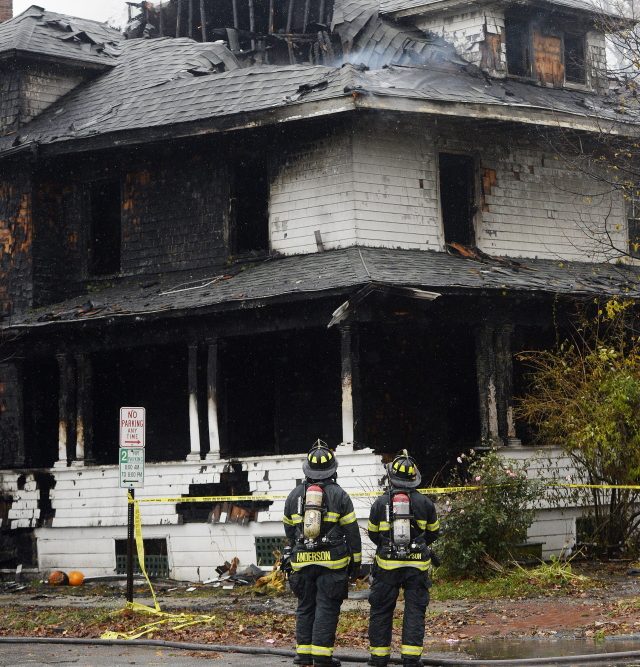A Portland landlord facing three months in jail for a code violation stemming from a deadly apartment building fire filed for a new trial or to have the charge dismissed, with his attorney arguing Tuesday that he was not made aware of evidence that could have changed the verdict.
Three days before Gregory Nisbet was to begin serving his sentence, his defense attorney, Matthew B. Nichols, said the prosecution did not provide a 2013 state memo regarding minimum window-size rules until after his client was convicted of a code violation in the Noyes Street apartment house that burned two years ago, killing six people.
An assistant state fire marshal who testified during the trial said Tuesday that the memo cited by Nisbet’s lawyer does not change the fact that the windows on the third floor were too small and violated safety codes.
Nisbet had been scheduled to report to jail Friday, but likely won’t have to report until sometime next year, if at all, depending on whether the judge grants a new trial, dismisses the charge or Nichols files an appeal.
The court filing by Nichols said he learned of the memo more than a week after Nisbet was sentenced Nov. 29 to 90 days in jail and fined $1,000 for violating a safety code because the third-floor windows were too small to provide a way for tenants to escape. Nichols wouldn’t comment on how or specifically when he learned about the memo.
The filing Tuesday asks for a new trial or the dismissal of the one count on which Nisbet was convicted.
“We disagree with their motion and will address the specifics in court,” Timothy Feeley, a spokesman for the Maine Attorney General’s Office, said in an email Tuesday night.
It was not immediately clear when the court would consider the motion.
‘A KNOWING VIOLATION OF THE CODE’
In October, a judge acquitted Nisbet on six counts of manslaughter after six young adults died in the Nov. 1, 2014, fire, the deadliest in the state in 40 years.
But the same judge also ruled that Nisbet violated the housing safety code and took the unusual step of imposing jail time for that violation.
Cumberland County Superior Court Justice Thomas Warren said the code violation deprived three tenants on the third floor of an emergency exit and a chance to get out of the house alive. The staircase was on fire and the third-floor windows were too small to be used as a way out, regardless of doubts raised during Nisbet’s trial about whether the tenants were conscious or quickly overcome by smoke and fumes, Warren said.
“This was a knowing violation of the code and it had serious consequences,” he said.
Some relatives complained after the trial that they felt Nisbet had escaped justice because he was acquitted of manslaughter.
On the other hand, the manslaughter charges and jail sentence for a code violation shocked some in the landlord community who closely watched the case. No Maine landlord had ever been convicted of manslaughter for an accidental fire.
MEMO BY STATE FIRE MARSHAL AT ISSUE
The filing by Nichols, Nisbet’s lawyer, says the 2013 memo, written by state Fire Marshal Joseph Thomas, “probably would have changed the verdict in this case” if the defense had known about it during the trial.
However, the assistant state fire marshal said Tuesday that Nisbet’s third-floor windows still did not meet the code as it was clarified in Thomas’ memo.
The memo says windows in buildings constructed before 1976 have to be at least 20-by-24 inches with a minimum opening of 3.3 square feet. Buildings built after 1976 are required to have a net clear opening of 5.7 square feet, the memo said.
“His windows weren’t anywhere close” to the lesser requirement for pre-1976 buildings, Assistant State Fire Marshall Rich McCarthy said Tuesday.
McCarthy said he’s not sure how wide the third-floor windows were, but they only opened about 8 inches and were well short of the 3.3-square-foot opening required by the state’s Life Safety Code.
The size of those windows was a focus of Nisbet’s trial.
State prosecutors referred to the third-floor apartments as death traps because there was no way to escape once the stairwell caught fire. Nisbet’s lawyer argued that tenants could have manipulated the windows to remove the panes from the frames, providing a wide enough opening for them to escape.
Warren ruled that the windows weren’t large enough and that Nisbet failed to provide a secondary exit from the third-floor bedrooms.
City officials have confirmed that the third-floor bedrooms were added to the house without a permit, but the judge ruled that the state failed to prove during the trial that those bedrooms were illegal, and that the state was unable to show whether Nisbet or a contractor was responsible for the lack of a second exit.
Nichols’ motion for a new trial said the window openings were exactly 5 square feet, meeting the minimum set out in Thomas’ 2013 memo. If the memo had been disclosed to defense lawyers, the filing says, “there is a reasonable probability that … the result of the proceeding would have been different.”
Edward D. Murphy can be contacted at 791-6465 or at:
emurphy@pressherald.com
Send questions/comments to the editors.






Comments are no longer available on this story